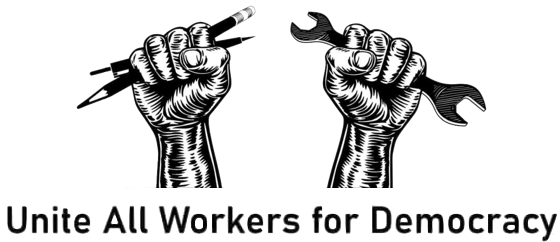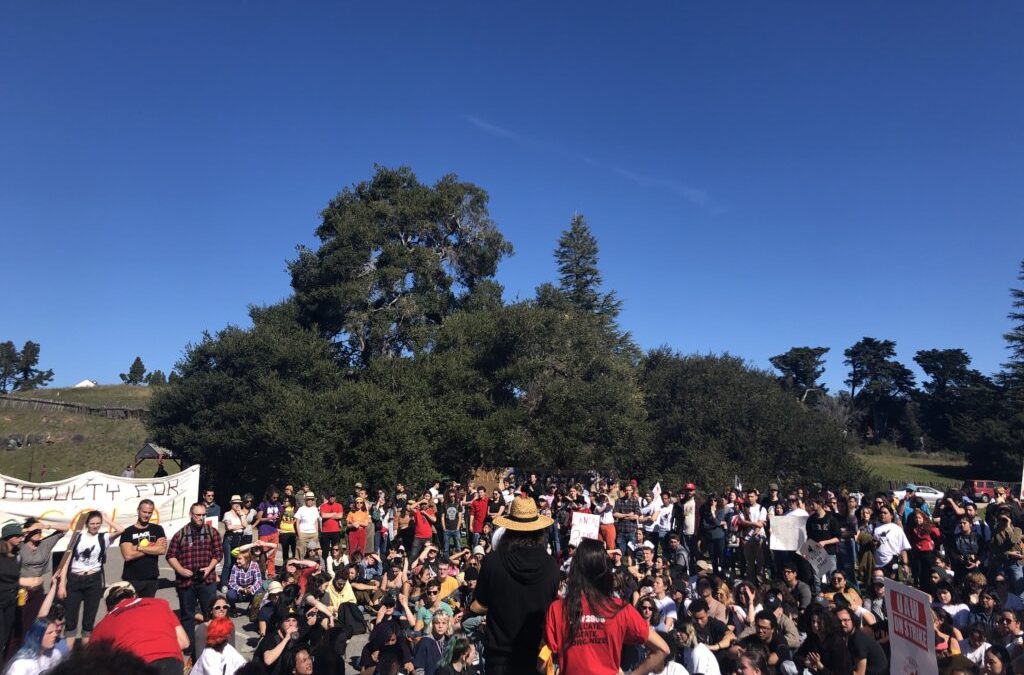The wildcat grading strike for a cost-of-living adjustment (COLA) waged by graduate student workers at UC-Santa Cruz since December 2019 came to an effective close at the end of last month. In an email to senior administration and fellow grads, strikers declared that they had collectively decided to submit outstanding grades from the Fall and Winter quarters to organize for an Unfair Labor Practice (ULP) strike through UAW 2865, the academic student employees union. This decision did not come lightly; it was, as the COLA strikers state, forced by a “heavy hand from above…an employer that will take every latitude to rebalance power in its favor.” 1 On cue, a few days following the announced end of the grade strike, the UCSC Student Conduct and Community Standards Office sent out a fresh round of charges against graduate students, and continued to pursue open processes against grads and undergrads who participated in the labor dispute – a reliable move UCSC Labor Relations has wielded over the last five months.
While the Santa Cruz strikers may be on the defensive right now, the COLA struggle is not over. The struggle’s trajectory, as detailed below, has been extraordinary: it encompasses the grading strike, the nearly month-long full teaching stoppage and picket line at the base of campus, the terminations of 80 graduate student workers from teaching positions, and the onset of the COVID-19 pandemic, the closure of the UCSC campus, and the transfer to online education for the foreseeable future. The ULP strike, a tactic that has been successful for UAW 2865 union activists in the past, has become a top priority for many COLA organizers, and the outcome of the strike preparations could alter the ground once again. As the UC anticipates harsh budget cuts in the months to come (from a state government that has put a who’s who list of billionaire CEOs in charge of its “Economic Recovery Task Force”), the power of the COLA demand, as a focused yet expansive articulation of the exploitative material conditions grad workers – and working people more generally – face.
Viewpoint had a wide-ranging conversation with members of the COLA Agitation Committee, a group of grad students who have written many of the daily news sheets and flyers that appeared during the strike, about the significance of the COLA struggle in the midst of the economic crisis induced by COVID-19 and changed university landscape; the important role that propaganda work and militant research can play in concrete situations; the organizational forms and political intelligences which emerged during the strike; the repressive responses and contradictory features of the UC administration; the correspondences between ongoing contestations by graduate students in higher education and the present wave of wildcat labor conflicts.
In the past, Viewpoint has drawn attention to the powerful practices of solidarity that were built at UCSC over the past decade between campus workers (especially service workers, skilled craft workers, and healthcare workers in AFSCME 3299), graduate students (in UAW 2865, and particularly the reform caucus, Academic Workers for a Democratic Union), contingent faculty and lectures in the American Federation of Teachers, and undergraduates who organized support meetings, study groups, and actions against austerity policies in education. This militant ecosystem remapped the “City on a Hill” as a site of contestation. We see the COLA struggle as sustaining the most important dimensions of that political sequence into the present.

